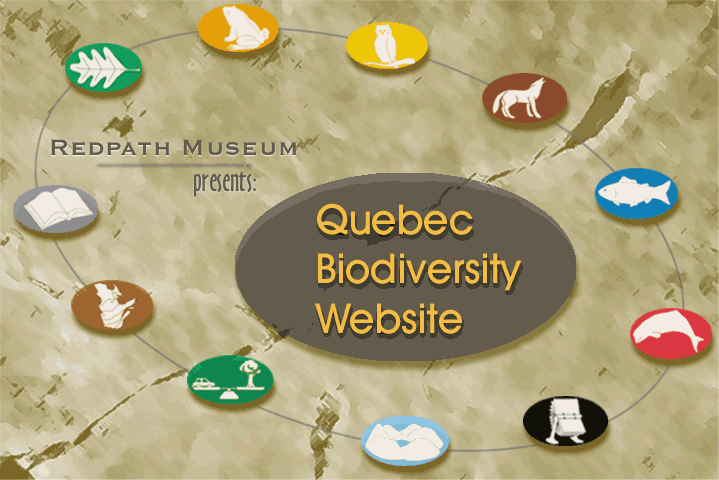
![]() elcome
to the Quebec Biodiversity Website!
elcome
to the Quebec Biodiversity Website!
There is little doubt that within the last few years, society
has become more aware of the value of the world's biological diversity
and its fragility in the face of ever-increasing human presence. With
awareness has arisen a need to take stock of the diversity of the world's
regions, to document the numbers and locations of species and habitats
around us, to determine their resilience to human intervention and, when
necessary, to protect them. Quebec is no exception. There are many individuals
and organizations working to do just that - document the biodiversity
of Quebec and work to protect it - and this website will showcase some
of the work they have done.
To document every study that
looks at species distributions would be a monumental task: there are over
2800 vascular plant species, 6000 non-vascular and fungus species, 650
vertebrate and 31 0000 invertebrate animal species currently known to
reside in the province of Quebec. The first aim of the Quebec Biodiversity
Website is to feature but a small portion of this spectacular variety
of living things in the province through images, informative text and
distribution maps. To date, we have features on breeding
birds, small and large-game mammals,
fish of the St. Lawrence River and amphibian
and reptile species. With time, we hope to expand to include plant
and invertebrate species. There is also a brief background on the natural
history of Quebec, which highlights the variation of climate and vegetation
which is the basis for this great diveristy of living organisms.
As a second aim, this website explores the conservation of Quebec's
biodiversity: what impact are
humans having on biodiversity and how are we trying to deal with its protection?
What species are at risk
of decline, endangerment and extinction in Quebec? What are the Quebec
and Canadian governments doing
to protect the biodiversity of Quebec?
Finally, this website has as its third aim to take the visitor
back to the theoretical basics
of biodiversity research: what does the word "biodiversity"
mean and how do we study
it? What global patterns
of diversity do we see in the world and what processes
influenced these patterns? What is the value
of biodiversity to the environment? To humans?
This project was coordinated, researched and designed by Helen
Sarakinos with the help of a great many contributors and volunteers,
and with support from the Ministère de la Culture et des Communications
Québec. If you would like more information about the background of
the project, or would like to contact the web designer, or the Museum,
just click here. There is also
additional information available about the references
and websites used in this site.